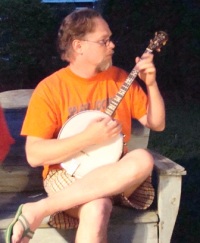In an age where cries from denominations about declining membership and church participation, a new poll offers some encouraging news on American’s feelings towards their congregation.
A Rasmussen poll found that 54% of American adults feel at least “somewhat connected” to their local church. In addition, 34% said they are “very connected.” The poll did not ask respondent’s religious affiliation. However, the poll did match responses to political connection questions. About 42% said they are not at all connected to a local political party. On the church side, 25% they have no connection to a local church.
The survey also provided some other interesting results:
- 35% of adults said their strongest personal allegiance is to their church
- 31% said their strongest allegiance is to their country.
- Only 30% of Catholics said their greatest loyalty was to their church, while 38% said they were more loyal to their country.
Aside from political allegiances, this study shows that most Americans feel a connectedness to a local church. Perhaps that may be the drawing power of a non-denominational church. No overarching identity that is in conflict with local values. As mainline churches are declining in membership, many independent churches are seeing an increase in attendance and membership. Mega churches are an example. At sizes measuring in the tens of thousands, they dwarf many smaller denominations.
This is a opportunity for church leadership to wake up and start seeing the local church as the key connection for communities. Focusing on the local impact of the church is what makes people want to come to a particular church. Folks want to feel connected to their community and to God. Food pantries, after school programs, youth ministries, community service, and other missional opportunities are ways churches can grab hold of people looking for faith.
The question for local religious leadership is, “What are you doing to actively help people in your community feel connected to your church?” If church leadership cannot come up with ways to encourage connection, then their church will increasingly find it difficult to retain and attract new members.



 This past Sunday a
This past Sunday a 

 As you can see, it looks more like a market than a church. Such a welcoming property and building. The church is only 20 years old and Holly is the founding pastor. Below, Holly is standing and we are meeting in the sanctuary. I loved this sanctuary. The building is only about 12 years old.
As you can see, it looks more like a market than a church. Such a welcoming property and building. The church is only 20 years old and Holly is the founding pastor. Below, Holly is standing and we are meeting in the sanctuary. I loved this sanctuary. The building is only about 12 years old. Holly comes out of the Southern Baptist tradition, but was ordained in the Disciples of Christ church. The sanctuary is welcoming and seating is structured in a “U”. Holly’s take on leadership was interesting. She talked about making mistakes, as all pastors do, but learning from them. She was honest and candid about her leadership and ministry.
Holly comes out of the Southern Baptist tradition, but was ordained in the Disciples of Christ church. The sanctuary is welcoming and seating is structured in a “U”. Holly’s take on leadership was interesting. She talked about making mistakes, as all pastors do, but learning from them. She was honest and candid about her leadership and ministry.
 Part III: Sacrament vs. Ordinance: Guest Blogger, Tripp Hudgins (
Part III: Sacrament vs. Ordinance: Guest Blogger, Tripp Hudgins ( Tub blog,
Tub blog,  A fresh
A fresh  Author Russell Rathbun spoke with On the Bema about his new book,
Author Russell Rathbun spoke with On the Bema about his new book, 

You must be logged in to post a comment.